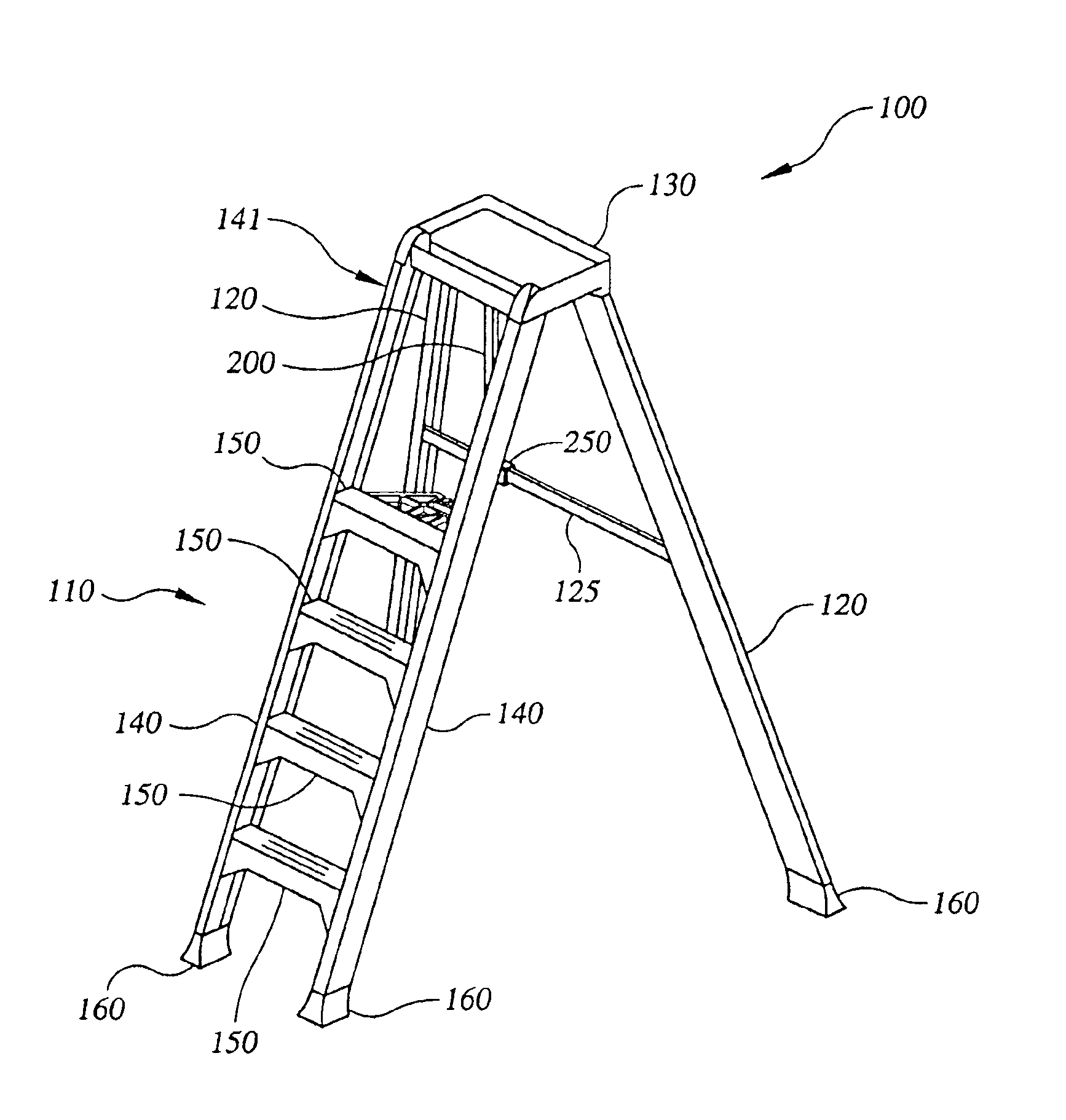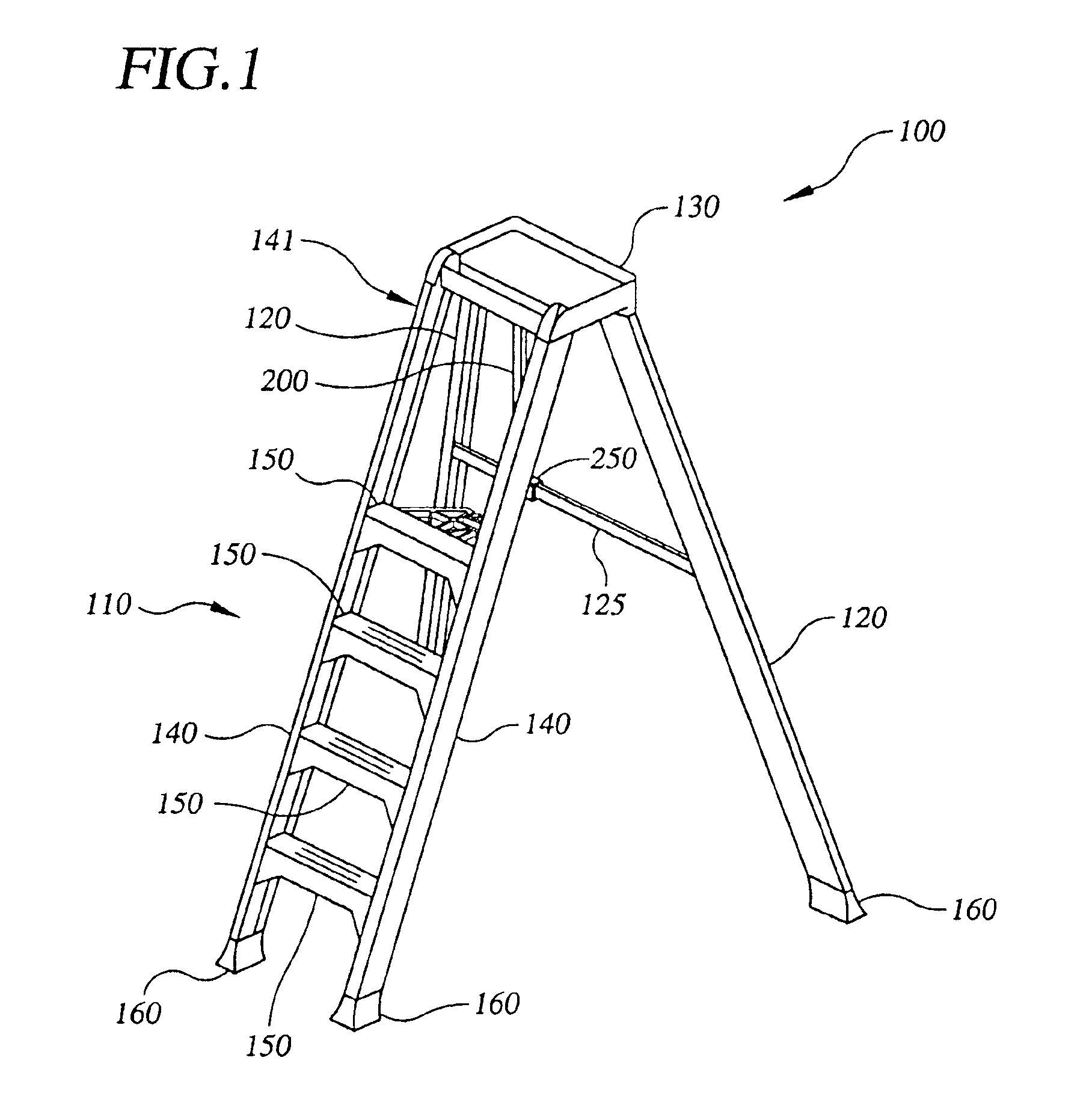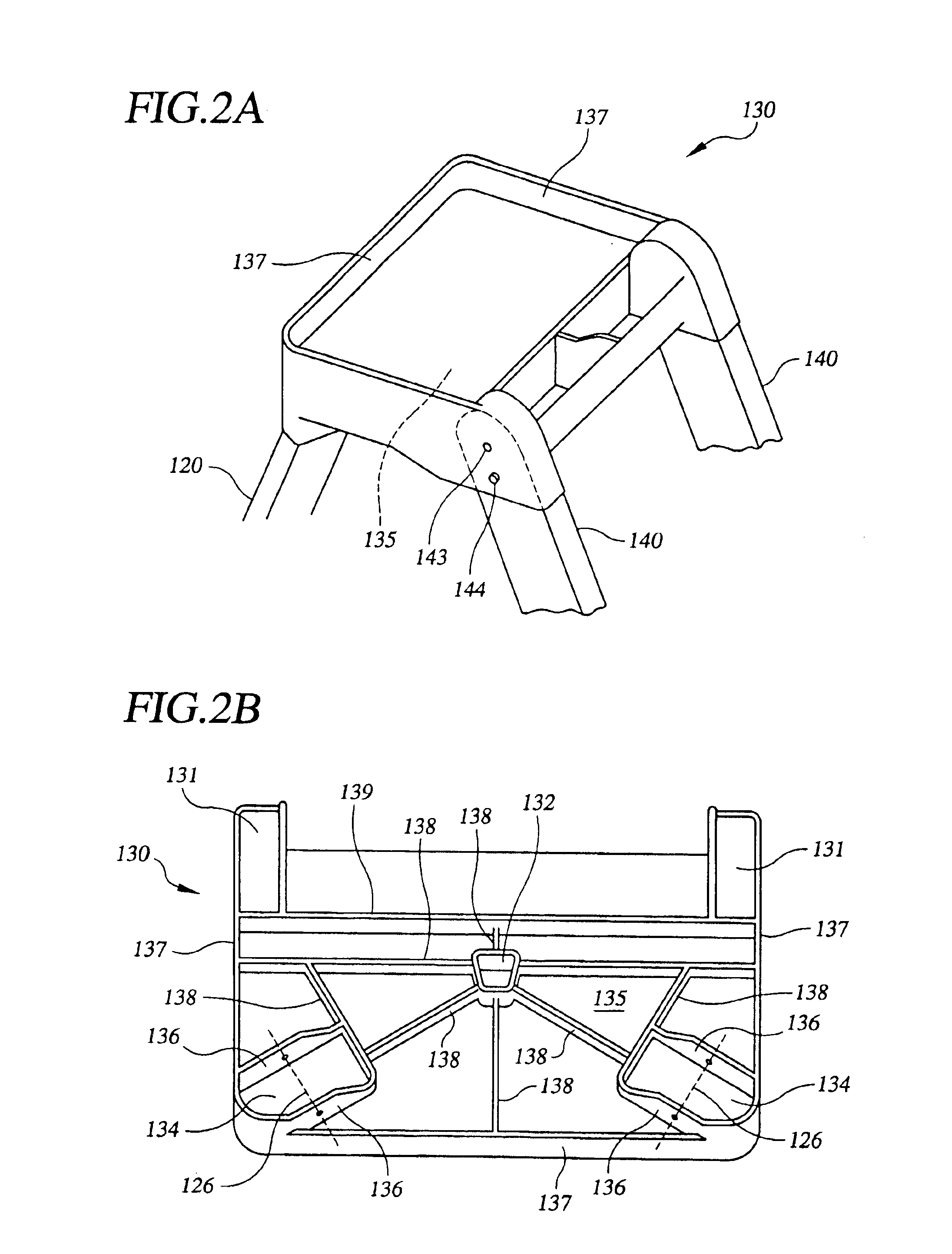Ergonomically improved tripod stepladder
a stepladder and tripod technology, applied in the field of folding ladders, can solve the problems of the independent articulated rear legs lacking the firm bracing of the typical a-frame stepladder, the stepladder will topple, and the user's injury,
- Summary
- Abstract
- Description
- Claims
- Application Information
AI Technical Summary
Benefits of technology
Problems solved by technology
Method used
Image
Examples
Embodiment Construction
The following detailed description shows the best currently contemplated modes of carrying out the invention. The description is not to be taken in a limiting sense, but is made for the purpose of illustrating the general principles of the invention and the best mode for practicing the invention, since the scope of the invention is best defined by the appended claims. As used in the context of this invention, the term “stability” implies that a stepladder remains upright without undue and unwanted movement during use, and that the structure may be sufficiently durable so as to maintain that degree of stability under prolonged use.
The invention may provide an inventive tripod stepladder having improvements over the prior art that are directed towards ergonomics and manufacturability. According to the invention, the inventive stepladder may have a number of safety features that promote safe operation. Some of these safety features include (1) an actuating mechanism that may be operate...
PUM
 Login to View More
Login to View More Abstract
Description
Claims
Application Information
 Login to View More
Login to View More - R&D
- Intellectual Property
- Life Sciences
- Materials
- Tech Scout
- Unparalleled Data Quality
- Higher Quality Content
- 60% Fewer Hallucinations
Browse by: Latest US Patents, China's latest patents, Technical Efficacy Thesaurus, Application Domain, Technology Topic, Popular Technical Reports.
© 2025 PatSnap. All rights reserved.Legal|Privacy policy|Modern Slavery Act Transparency Statement|Sitemap|About US| Contact US: help@patsnap.com



